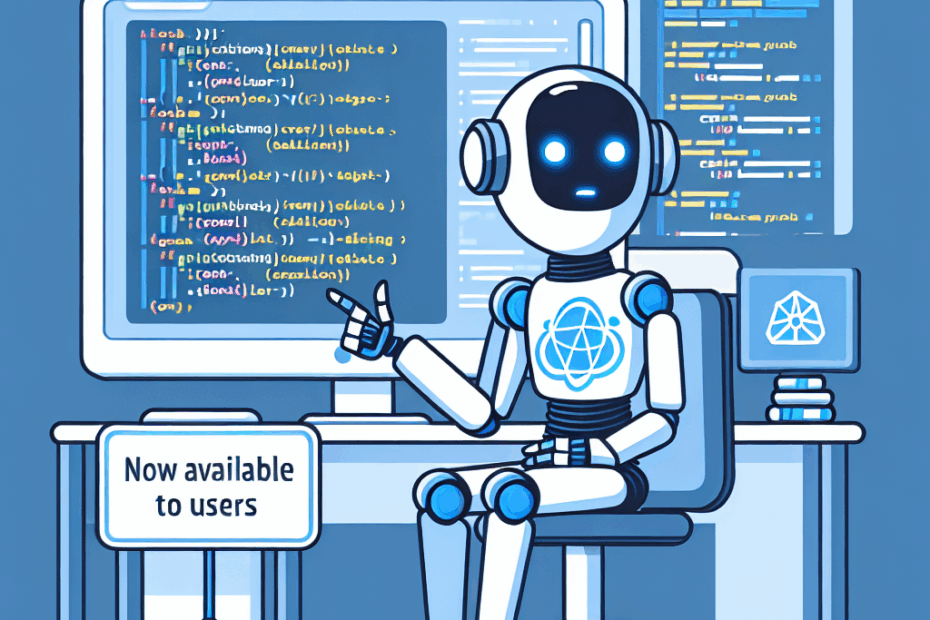GitHub Copilot Gets a Supercharged Upgrade!
Hey everyone, John here! Today, we’re diving into some exciting news from GitHub. They’ve just unveiled a new “coding agent” for their already awesome GitHub Copilot. Think of GitHub Copilot like having a really smart pair programmer who helps you write code. Now, they’ve given that pair programmer superpowers! Let’s break it down.
What is this “Coding Agent” Anyway?
Okay, so GitHub Copilot already helps you write code by suggesting lines and even entire blocks of code. This new coding agent takes it a step further. It’s like giving Copilot its own little workshop inside GitHub.
Lila: John, you said “inside GitHub.” What exactly does that mean?
John: Great question, Lila! Think of GitHub like a giant online collaboration space for programmers. It’s where they store their code, work together on projects, and keep track of changes. This coding agent lives right there, within that space, ready to jump in and help.
Basically, this agent can independently tackle tasks or issues you assign to it. It sets up its own development environment, using something called GitHub Actions, to get the job done.
Lila: “GitHub Actions”? That sounds complicated!
John: Don’t worry, it’s simpler than it sounds! Think of GitHub Actions as a set of automated tools that help the coding agent build, test, and deploy code. It’s like having a little robot assistant that handles all the repetitive stuff, so the agent can focus on the creative problem-solving parts.
How Does it Actually Work?
According to GitHub, this coding agent runs in the background. You tell it to work on something, and it gets to it. Once it’s done, it submits its work as a “pull request.”
Lila: A “pull request”? What’s that?
John: Imagine you’re working on a group project, Lila. A pull request is like saying, “Hey everyone, I’ve made some changes to the project! Can you take a look and see if you like them?” It’s a way to propose changes to the main codebase and get feedback from other developers before those changes are officially included. It’s all part of good teamwork!
So, here’s the process:
- You assign a task to GitHub Copilot.
- The coding agent starts working on it in its own environment.
- It makes changes to the code and saves them.
- It submits these changes as a pull request.
- You can then review the changes and approve them (or ask for revisions).
The cool thing is that you can track every step the agent takes through “session logs.” It’s like watching a movie of the agent’s progress, so you always know what’s going on.
Is It Safe?
Security is always a concern when we’re talking about AI writing code, right? GitHub has built in some safeguards. For example, existing security policies, like “branch protections,” still apply.
Lila: “Branch protections”? Another new term!
John: Okay, imagine your codebase (all the code in your project) as a tree. The main branch is the trunk, and other developers might create their own branches to work on new features without messing up the main code. Branch protections are like rules that prevent accidental changes to the main trunk. It ensures that only reviewed and approved code makes it into the core project.
Also, the agent’s pull requests require human approval before any “CI/CD workflows” are run.
Lila: Okay, this acronym is new for me. What are “CI/CD workflows?”
John: Think of CI/CD (Continuous Integration/Continuous Delivery) workflows as automated processes that test and deploy code. It’s like a robot assembly line for software! The human approval step means that a real person needs to say “yes” before the robot assembly line starts rolling.
What Can This Agent Actually Do?
GitHub says that this agent is great at “low-to-medium complexity tasks in well-tested code bases.” That means it can handle things like:
- Adding new features
- Fixing bugs
- Extending tests
- Refactoring code (that’s like cleaning up and organizing the code)
- Improving documentation
The key here is “well-tested code bases.” The agent works best when it’s dealing with code that’s already solid and reliable.
Who Gets to Use It?
Right now, the GitHub Copilot coding agent is available to Copilot Enterprise and Copilot Pro+ customers. You also need to enable the agent in the specific code repositories where you want to use it.
Good news for those using other coding environments! GitHub Copilot agent mode can now be activated in Xcode, Eclipse, JetBrains, and Visual Studio IDEs via a public preview.
Lila: John, you mentioned “IDEs.” What are those?
John: IDE stands for Integrated Development Environment. Think of it as a supercharged text editor for programmers. It’s like a writer’s office, with all the tools you need (editor, compiler, debugger, etc.) in one place. Visual Studio Code, Xcode, Eclipse, and JetBrains are all popular IDEs.
Final Thoughts
This new coding agent feels like a significant step forward for AI-powered coding. It’s not going to replace human programmers anytime soon, but it could definitely make us more efficient and productive. It seems especially useful for handling routine tasks, freeing up developers to focus on more complex and creative challenges.
Lila: Wow, this is all really interesting! As someone who’s just starting to learn about coding, it’s amazing to see how AI is changing the game. I’m a little nervous about it replacing human jobs, but it’s also really exciting to think about how it can help us build better software faster!
This article is based on the following original source, summarized from the author’s perspective:
GitHub unveils coding agent for GitHub Copilot
